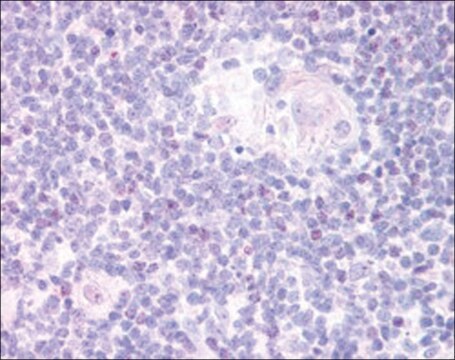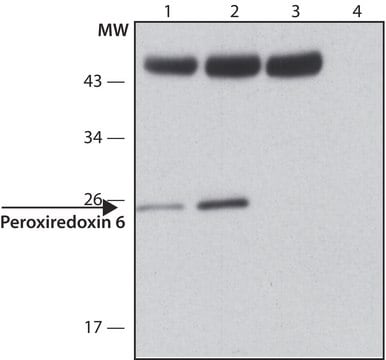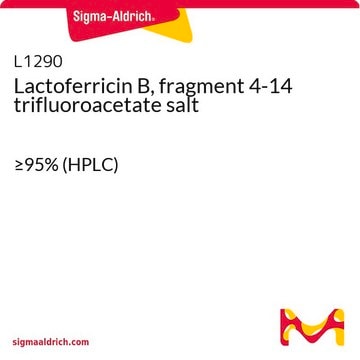H3791
Anti-HOXA3 antibody produced in rabbit
~1.0 mL/mL, affinity isolated antibody
Synonyme(s) :
Anti-HOX1, Anti-HOX1E, Anti-Homeobox A3, Anti-MGC10155
About This Item
Produits recommandés
Source biologique
rabbit
Conjugué
unconjugated
Forme d'anticorps
affinity isolated antibody
Type de produit anticorps
primary antibodies
Clone
polyclonal
Forme
buffered aqueous solution
Poids mol.
antigen ~60 kDa
Espèces réactives
human, mouse
Conditionnement
antibody small pack of 25 μL
Concentration
~1.0 mL/mL
Technique(s)
immunoprecipitation (IP): 5-10 μg using lysates of HEK-293T cells expressing human HOXA3
indirect immunofluorescence: 2-5 μg/mL using paraformaldehyde fixed HEK-293T cells over expressing human HOXA3
western blot: 2-4 μg/mL using lysates of HEK-293T cells over expressing human HOXA3
Numéro d'accès UniProt
Conditions d'expédition
dry ice
Température de stockage
−20°C
Modification post-traductionnelle de la cible
unmodified
Informations sur le gène
human ... HOXA3(3200)
mouse ... Hoxa3(15400)
Vous recherchez des produits similaires ? Visite Guide de comparaison des produits
Description générale
Spécificité
Application
- proximity ligation assay
- immunoblotting
- immunoprecipitation
- immunofluorescence
Actions biochimiques/physiologiques
Forme physique
Stockage et stabilité
Clause de non-responsabilité
Not finding the right product?
Try our Outil de sélection de produits.
Code de la classe de stockage
12 - Non Combustible Liquids
Classe de danger pour l'eau (WGK)
nwg
Certificats d'analyse (COA)
Recherchez un Certificats d'analyse (COA) en saisissant le numéro de lot du produit. Les numéros de lot figurent sur l'étiquette du produit après les mots "Lot" ou "Batch".
Déjà en possession de ce produit ?
Retrouvez la documentation relative aux produits que vous avez récemment achetés dans la Bibliothèque de documents.
Notre équipe de scientifiques dispose d'une expérience dans tous les secteurs de la recherche, notamment en sciences de la vie, science des matériaux, synthèse chimique, chromatographie, analyse et dans de nombreux autres domaines..
Contacter notre Service technique








